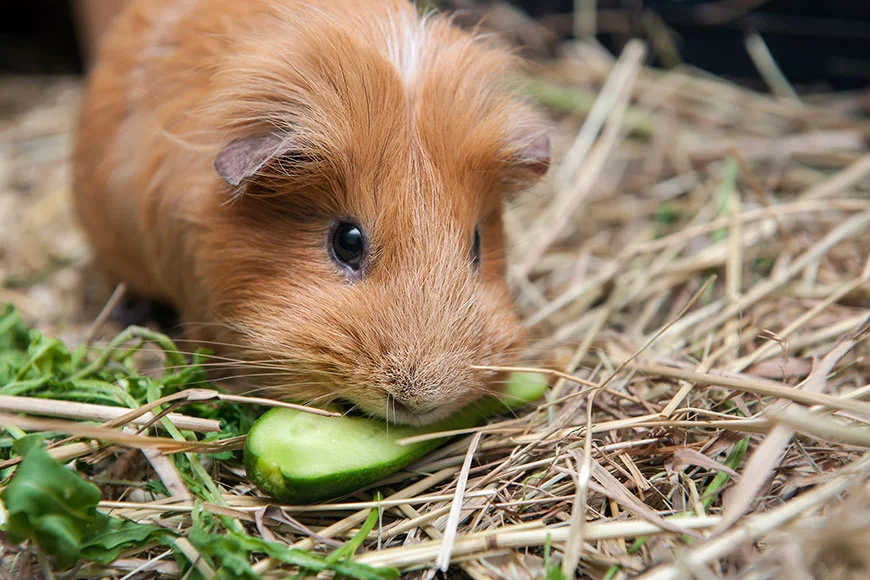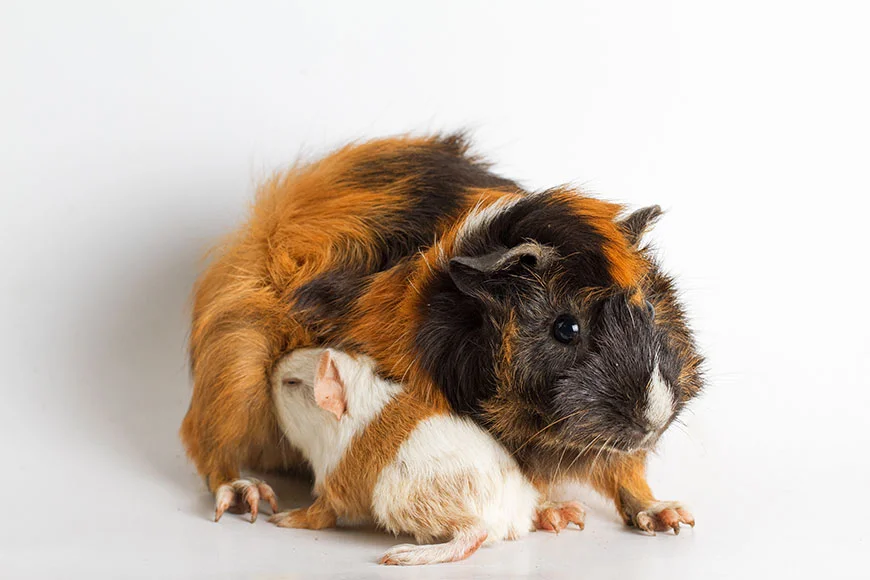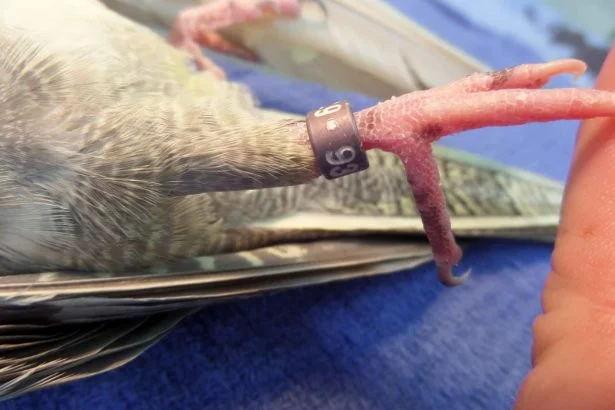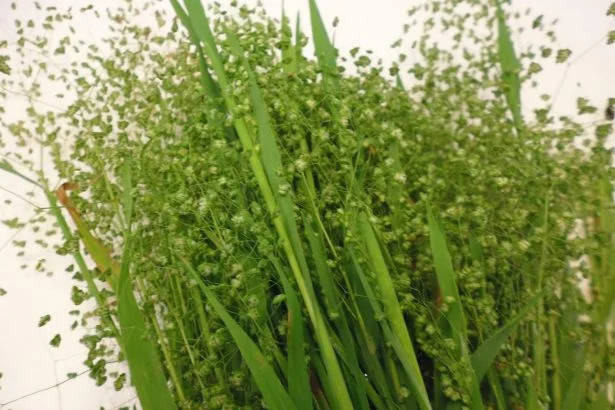Guinea pigs, often referred to simply as “pigs” by enthusiasts, are small, gentle, and personable pets that are popular around the world. These delightful animals, with their curious nature and endearing personalities, make for wonderful companions, especially for families and beginners.
Originating from regions like Peru and Brazil, guinea pigs have been domesticated for centuries. Contrary to their name, they are not pigs and are not from Guinea. They belong to the rodent family and are known scientifically as a species of the “Cavia” genus.
There are various breeds of guinea pigs in Australia, each with its unique characteristics and charm. The Abyssinian, with its rosettes and unique hair patterns, is a favourite among many. The Silkie or Sheltie, characterised by its long, smooth coat, is another popular choice for those who enjoy grooming their pets. The Rex, with its curly fur and whiskers, offers a different texture altogether. The Smooth-Coated breed, as the name suggests, has short, glossy fur and is often the image that comes to mind when one thinks of guinea pigs. Lastly, the Peruvian stands out with its long, flowing hair that can reach impressive lengths.
Guinea Pig Anatomy
Guinea pig anatomy is a testament to their evolutionary journey as ground-dwelling herbivores. Their compact, cylindrical bodies are supported by short, sturdy legs, each ending in four toes in the front and three in the back.
Their dental anatomy is particularly notable, with continuously growing incisors and molars that require constant wear from chewing fibrous foods, primarily hay. Unlike many other mammals, guinea pigs lack the ability to produce vitamin C, making it essential for them to obtain it from their diet.
Their large eyes, positioned on the sides of their head, provide a wide field of vision, aiding in detecting predators. Additionally, their ears are well-developed, capable of picking up a range of sounds, while their sensitive whiskers assist in navigating their environment.
Internally, their digestive system is adapted for a herbivorous diet, with a complex cecum that aids in the fermentation of fibrous materials. Understanding the intricacies of their anatomy can provide valuable insights into their care and health needs.
Guinea Pig Behaviour
Guinea pig behaviour is a fascinating blend of social interaction, vocal communication, and instinctual habits. These creatures are inherently social animals, often seeking companionship with other guinea pigs.
Their vocalisations, which can range from wheeks of excitement to purring sounds of contentment, play a crucial role in expressing their emotions and needs. It’s not uncommon to see them popcorn, a sudden leap into the air, when they’re particularly joyful or excited. Conversely, they might freeze in place when they sense potential danger, a throwback to their wild instincts.
They’re also known for their meticulous grooming habits, often cleaning themselves and their cage mates. Understanding these behaviours is essential for any guinea pig owner, as it provides insights into their well-being and emotional state.
Guinea Pigs as Pets
Owning a guinea pig is a rewarding experience. They are known for their gentle nature, making them perfect pets for kids and beginners. However, as with any pet, understanding how to take care of a guinea pig is crucial to ensure they lead a happy and healthy life. It’s also important they receive regular check-ups at your local guinea pig vet.
If you are considering getting a guinea pig for kids, be sure to teach them how to handle them with care. They are delicate creatures that require gentle companions.
When it comes to looking after guinea pigs, there are several things you need for a guinea pig to provide it with a comfortable and safe home. Here we cover the essentials for proper guinea pig care.
Guinea Pig Care
Habitat
Size and Space: A guinea pig’s habitat should be spacious, allowing them ample room to move, play, and exercise. A minimum of 70 square centimetres for one guinea pig and 100 square centimetres for two is recommended. However, bigger is always better.
Location: Place the cage in a quiet, sheltered location with proper ventilation, away from direct sunlight and extreme temperatures as guinea pigs are sensitive to cold and heat. The optimal temperature range is between 18-26°C. Guinea pigs are sensitive to heat, so ensure the area is well-ventilated.
Safety: Ensure the cage has a secure door to protect your guinea pig from other household pets. The spacing between bars should be no more than half an inch to prevent them from squeezing through or getting stuck.

Bedding
Material: Wood shavings (like aspen) or recycled paper products are ideal. Avoid cedar or pine shavings as they can be harmful.
Depth: A 5 cm – 7.5 cm depth is recommended to allow guinea pigs to burrow and play.
Maintenance: Spot-clean the bedding daily to remove droppings and any wet spots. A complete change and cage cleaning should be done weekly.
Diet
Pellets: Opt for high-quality guinea pig pellets fortified with Vitamin C. Offer about 1/8 cup of pellets daily for each adult, this is very important when it comes to guinea pig care. Australia has many pet supply stores and online resources to order proper food for your furry companion.
Hay: Timothy hay should be available at all times. It aids in digestion and helps wear down their ever-growing teeth.
Fresh Produce: Vegetables like bell peppers, cucumbers, and leafy greens can be given daily. Fruits such as apples and strawberries can be offered in moderation as occasional treats. Always remove seeds and pits.
Foods to Avoid: Some foods are unsuitable for guinea pigs, such as onions, garlic, potatoes, avocado, beans, rhubarb and certain types of lettuce like iceberg.

Water
Freshness: Guinea pigs should have constant access to fresh, clean water. It’s essential to change the water daily.
Bottle vs. Bowl: A water bottle with a sipper tube is preferable as bowls can easily be tipped over or contaminated with bedding and droppings.
Position: Ensure the water bottle is positioned at a height where the guinea pig can comfortably drink without straining.
Toys and Enrichment
Chew Toys: Guinea pigs’ teeth continuously grow, so providing them with chew toys helps keep their teeth in check. Wooden blocks or hay-based toys are excellent choices.
Tunnels and Hideouts: Guinea pigs love to hide and play in tunnels. These can be shop-bought or made from cardboard tubes.
Exercise Ball: While not a toy, an exercise ball can be a fun way for your guinea pig to explore and exercise outside their cage. Ensure it’s the right size and always supervise playtime.
Interactive Toys: Some other things guinea pigs love are puzzle toys or toys with hidden treats that can stimulate their minds and keep them engaged.
By ensuring each of these care essentials is met, you’ll be providing your guinea pig with a comfortable, stimulating, and healthy environment.
Baby Guinea Pigs
Neonatal guinea pigs, or baby guinea pigs, also referred to as “pups”, are precocial animals. This means that, unlike many other mammals, they are born fully furred, with their eyes and ears open, and are relatively mature and mobile shortly after birth.
Baby guinea pig care is crucial during the initial weeks. They require a specific diet, which includes baby guinea pig food rich in essential nutrients to support their growth. As they grow, their dietary needs change, and understanding these needs is vital to ensure their health and longevity.

Birth and Immediate Postnatal Period: Typically, a guinea pig’s gestation period lasts between 59 to 72 days. Once born, pups are active and can move around within a few hours. They are also capable of consuming solid food, although they will still nurse from their mother for essential nutrients.
Dietary Needs: While pups will begin nibbling on solid foods like hay within a day or two of birth, mother’s milk remains a crucial part of their diet for the first few weeks. The milk provides antibodies and essential nutrients that boost the pup’s immune system and overall health.
Growth and Development: Baby guinea pigs grow rapidly. Within a month, they can double or even triple their birth weight. It’s essential to provide them with a nutrient-rich diet to support this rapid growth.
Socialisation: Early socialisation is vital for pups. Handling them gently and regularly during their first few weeks can help them become more accustomed to human touch, making them friendlier and less stressed in human company.
Health Monitoring: Regular health checks are crucial during the early stages. Monitoring their weight, checking for signs of dehydration, and ensuring they are feeding properly can help detect and address potential health issues early on.
Weaning: By the age of 3 to 4 weeks, pups are usually ready to be weaned off their mother’s milk, transitioning entirely to solid foods. However, it’s essential to ensure this transition is gradual and stress-free for both the mother and the pups.
While neonatal guinea pigs are relatively independent compared to other mammals, they still require meticulous care, especially in their formative weeks. Proper nutrition, regular health checks, and gentle handling are key to ensuring a baby guinea pig grows into a healthy, well-adjusted adult.
Guinea Pig Facts
Here are some fun facts about guinea pigs that you may not know:
- Guinea pigs are active up to 20 hours a day and sleep for only short periods.
- They have been domesticated by humans for over 7,000 years.
- In the wild, they live in close family groups and can form colonies.
- The name “guinea pig” is a bit of a mystery, as they are neither from Guinea nor are they pigs!
In Conclusion
Whether you’re looking into guinea pigs for children, an experienced guinea pig owner or considering getting one for the first time, these animals have a lot to offer. Their sociable nature and intriguing behaviour and unique anatomical features make them captivating companions that are fun and rewarding to care for. With diligent care, proper attention, and a nurturing environment, you can foster a thriving and fulfilling relationship with your guinea pig, ensuring its well-being and happiness throughout its life.
FAQs
Yes, guinea pigs belong to the rodent family, making them relatives of mice, rats, and hamsters.
Absolutely! Guinea pigs are ideal for beginners as they are gentle, low-maintenance, and can form strong bonds with their owners.
Guinea pigs enjoy a variety of toys, including tunnels, chew toys made of wood or hay, balls, and even simple cardboard boxes. They also appreciate toys that stimulate their natural foraging instincts.
Guinea pigs are social animals and thrive in the company of their kind, so it’s recommended to keep them in pairs or groups.
Certain foods are harmful or toxic to guinea pigs, including iceberg lettuce, potatoes, rhubarb, onions, garlic, avocado, chocolate, dairy products, bread, nuts and seeds.
Yes, guinea pigs are popular pets in Australia. However, it’s essential to understand the specific care guidelines for an Australian guinea pig due to the country’s unique climate.
On average, guinea pigs have a lifespan of 5 to 7 years, although with proper care, some can live up to 10 years.
Newborn guinea pigs, or pups, are usually about 3 to 4 inches long.
Adult guinea pigs typically reach a length of 8 to 12 inches, depending on the breed and individual genetics.
An adult guinea pig’s weight can vary based on its age, diet, and overall health. However, most healthy adult guinea pigs weigh between 700 grams to 1.2 kilograms. When fully grown, the average guinea pig weight typically ranges from 900 grams to 1.1 kilograms.
Guinea pigs have a broad field of vision due to their side-placed eyes, but their eyesight is relatively poor. They rely more on their sense of smell and hearing to navigate and recognize their surroundings.






1 Comment
Comments are closed.